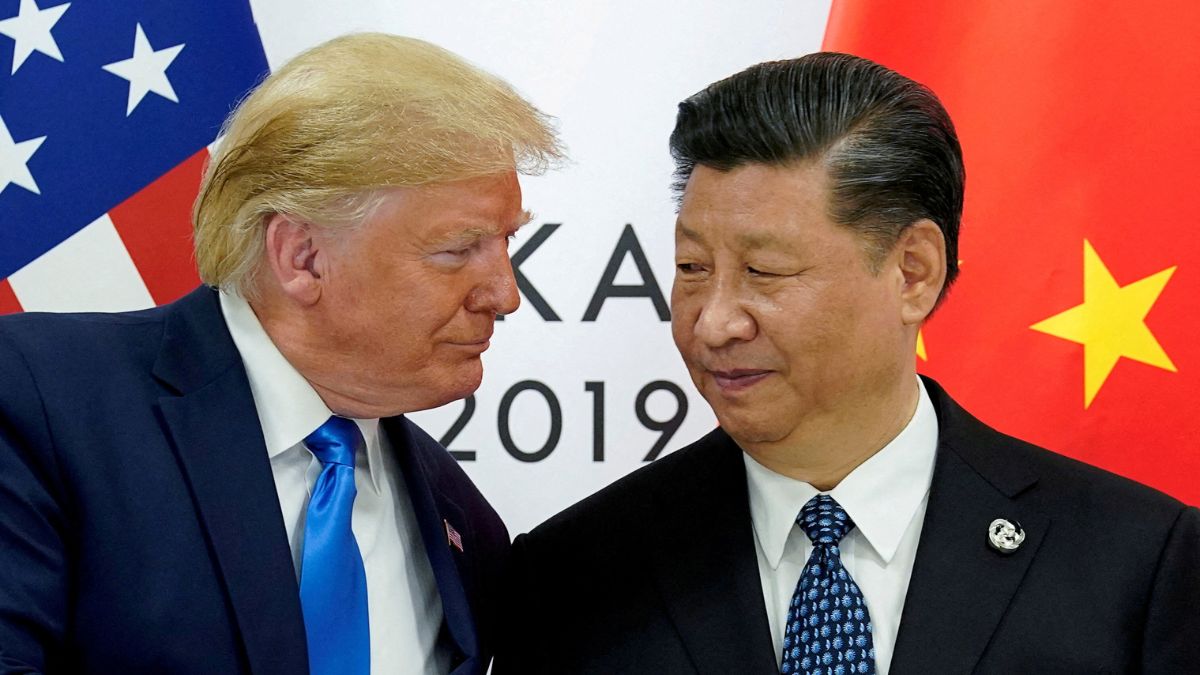Few political eras have seen such starkly contrasting figures rise to global prominence — each ruling a major country, both intent on shaping the world in their own image. One governs the United States; the other, China. No prizes for guessing they are President Donald Trump and President Xi Jinping.
Metaphorically speaking, Trump is a wrecking ball: he crashes through barriers, disregards structure and thrives on disruption. Xi, on the other hand, is a granite mountain — unyielding, slow to react, but nearly impossible to move or break. If Trump is a gladiator in a packed arena, Xi is a master chess player behind a curtain.
Yet, they are united, each in their own way, by a single mission: to test the true extent of India’s nerves of steel.
When comparing Xi and Trump, it’s crucial to understand the starkly different political systems they represent and the sharply contrasting styles they embody. Both are resolute, but their firmness manifests differently. While being “adamant” implies an unyielding stance, how that quality is expressed varies greatly with context. Xi and Trump both exhibit a strong will, but in uniquely revealing ways.
Xi Jinping: Strategic and systemic adamance
Xi operates within a one-party authoritarian political system where opposition is minimal and dissent is tightly controlled. In such a centralised environment, public disagreement is rare. Xi is consistent, measured and deeply committed to long-term strategic goals.
These include the centralisation of power — evident in his removal of presidential term limits — and the reinforcement of state control over information and dissent, as seen in his handling of Hong Kong and the Xinjiang region. He is also a strong advocate for what he calls “national rejuvenation,” pushing for China to assume a more dominant role on the global stage.
Xi’s adamance is cold, calculated and institutionally reinforced. He rarely shifts direction and uses the full power of the state to achieve ideological consistency. His leadership exhibits an unwavering commitment to the Communist Party’s vision, reflecting a deep alignment with China’s long-term national strategy.
Impact Shorts
More ShortsDonald Trump: Personal and rhetorical adamance
In contrast, Trump operates within a democratic system that features checks and balances, open criticism and political opposition. This environment requires more visible and combative forms of assertion, especially from a polarising figure like Trump.
Trump is highly assertive and thrives on confrontation. He is known for sticking to controversial positions even in the face of strong opposition. While he may change tactics frequently, his underlying positions often remain fixed. He leverages media attention and public spectacle to project strength and dominance.
Trump’s adamance is performative, emotionally charged and heavily reliant on personality. It manifests most clearly in his refusal to concede defeat, his tendency to attack critics and his use of social media to dominate discourse. While not as ideologically grounded as Xi, Trump is unwavering in demanding personal loyalty and projecting dominance.
Psychological contrast
Xi exhibits a deliberative cognitive style. His adamance is ideological and institutional, rooted in a long-term vision for China’s future. His motivation appears to be legacy-driven focussed on national rejuvenation and absolute control over the trajectory of the Chinese state.
Trump, on the other hand, demonstrates an impulsive and reactive cognitive style. His adamance is more emotional and public, driven by ego, dominance and the need to maintain a loyal following. Unlike Xi, his political rigidity is less about ideology and more about identity and personal vindication.
India walks a diplomatic tightrope
Wading through the global stage today, India finds itself balancing between two geopolitical titans — Xi and Trump — who sit at opposite ends of the leadership pendulum. One is cold, methodical and ideologically unyielding and the other fiery, impulsive and emotionally confrontational. For Indian diplomacy, this contrast presents not just a challenge. It’s a litmus test of strategic agility, neutrality and national interest preservation.
Engaging with China under Xi means India must be equally deliberate, balancing border tensions, trade dependencies and regional influence without triggering direct escalation.
The border issues with Beijing are yet to be resolved fully and China is already playing hardball with New Delhi when it comes to exporting rare earth minerals to India. With China, India must read between silences — deciphering intention through subtle policy shifts rather than public declarations. Any misstep risks being frozen out of regional initiatives, or worse, being slowly encircled geopolitically.
With Trump, the danger wasn’t silence but noise. India had to stay close enough to benefit from alignment without getting pulled into America-first whirlwinds that could burn long-standing strategic autonomy. That is already proving to be a tough ask with two back-to-back tariff 25 per cent each imposed on India.
Caught between ice and fire, India walks a perilous tightrope — measured, cautious and acutely aware of the stakes. It must balance history with ambition, geography with strategy and ideology with interest. Lean too far toward the United States, and it risks provoking China; tilt toward China, and it jeopardises critical defence ties, technology access and democratic alignment with the West.
Success lies not in picking sides, but in preserving strategic autonomy with quiet strength. Like bamboo in the wind, India must bend without breaking — resilient, adaptable and rooted deeply in its own national purpose. In this delicate act of balance, India isn’t merely reacting to great power rivalry — it is shaping its own centre of gravity.
)